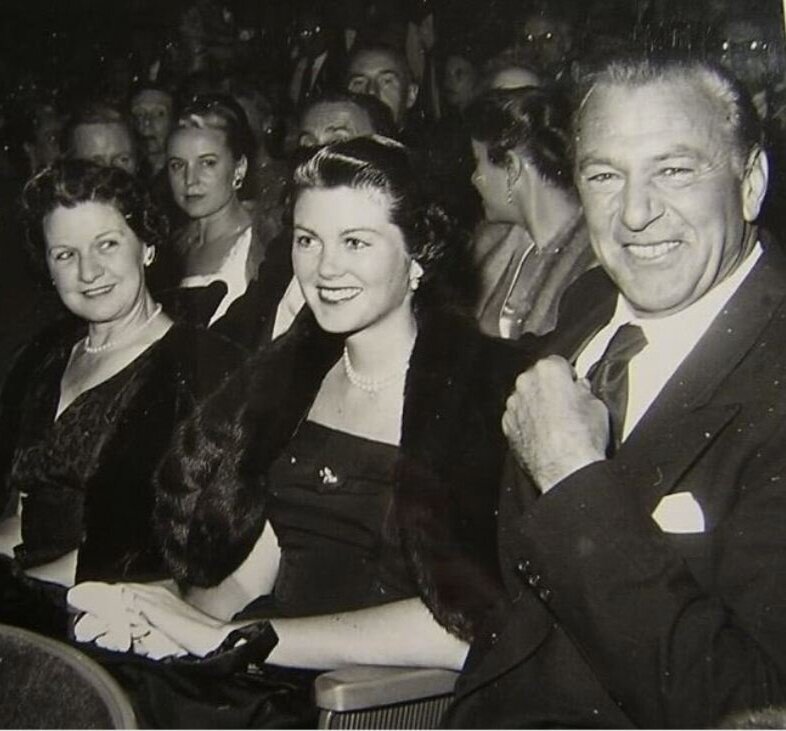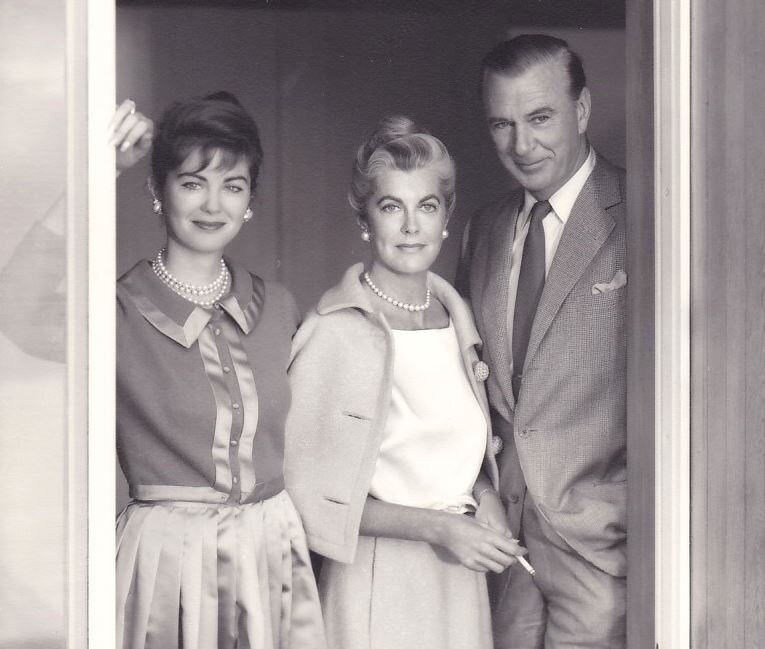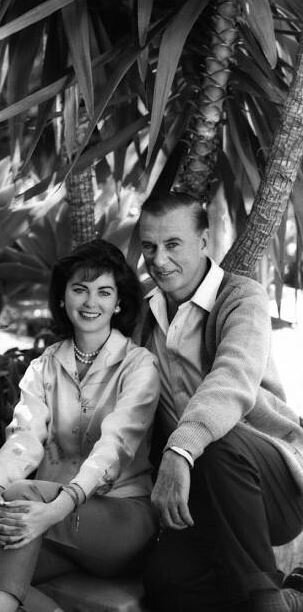2005: The Gary Cooper Endowed Support Fund is established at the University of Southern California, School of Cinematic Arts
2016: Cartier Reopens their new Maison on 5th Avenue in New York, featuring Iconic Gary Cooper Photos in the new watch room and throughout the Maison with his signature Cartier Tank Watch
2017: The Film Forum, hosts a Screening of High Noon with a Panel led by Foster Hirsch with Maria Cooper Janis and Glenn Frankel introducing his new book, HIGH NOON – THE HOLLYWOOD BLACKLIST AND THE MAKING OF AN AMERICAN CLASSIC
2018: Maria Cooper Janis records the oral history of her father now a permanent installation at the new Academy Museum of Motion Pictures
2019: The Cooper archives and personal treasures are donated to USC for an Exhibition and Screening Delayed due to COVID
2021: Gary Cooper's Likeness and Image is featured in Current Films & Television Shows
2022: April will kick off a special screening and a six month Gary Cooper Exhibition at USC
Gary Cooper was born Frank James Cooper in Helena, Montana, one of two sons of an English farmer from Bedfordshire, who later became an American lawyer and judge, Charles Henry Cooper (1865-1946), and Kent-born Alice (née Brazier) Cooper (1873-1967). His mother hoped for their two sons to receive a better education than that available in Montana and arranged for the boys to attend Dunstable Grammar School in Bedfordshire, England between 1910 and 1913.Upon the outbreak of World War I, Cooper’s mother brought her sons home and enrolled them in a Bozeman, Montana, high school.
When Cooper was 13, he injured his hip in a car accident. He returned to his parents’ ranch near Helena to recuperate by horseback riding at the recommendation of his doctor. Cooper studied at Iowa’s Grinnell College until the spring of 1924, but did not graduate. He had tried out, unsuccessfully, for the college’s drama club. He returned to Helena, managing the ranch and contributing cartoons to the local newspaper. In 1924, Cooper’s father left the Montana Supreme Court bench and moved with his wife to Los Angeles. Their son, unable to make a living as an editorial cartoonist in Helena, joined them, moving there that same year, reasoning that he “would rather starve where it was warm, than to starve and freeze too.”
Failing as a salesman of electric signs and theatrical curtains, as a promoter for a local photographer and as an applicant for newspaper work in Los Angeles, Cooper found work as an actor in 1925. He earned money as an “extra” in the motion picture industry, usually cast as a cowboy. He is known to have had an uncredited role in the 1925 Tom Mix Western, Dick Turpin. The following year, he had screen credit in a two-reeler, Lightnin’ Wins, with actress Eileen Sedgwick as his leading lady.
After the release of this short film, Cooper accepted a long-term contract with Paramount Pictures. He changed his name to Gary in 1925, following the advice of casting director Nan Collins, who felt it evoked the “rough, tough” nature of her native Gary, Indiana.
“Coop,” as he was called by his peers, went on to appear in over 100 films. Cooper broke through in a supporting role in Wings (1927), the only silent film to win an Academy Award for Best Picture, following that with Nevada (1927) co-starring Thelma Todd and William Powell, based on the Zane Gray novel, which was remade in 1944 as an early Robert Mitchum vehicle, the only time Cooper and Mitchum played the same role. He became a major star with his first sound picture, The Virginian (1929) opposite Walter Huston as the villainous Trampas. The Spoilers appeared the following year with Betty Compson, which was remade in 1942 with Compson lookalike Marlene Dietrich and John Wayne in Cooper’s role. Cooper followed this action movie with his own Dietrich film entitled Morocco (1930) in which he played a Foreign Legionnaire. Devil and the Deep (1932) featured Cary Grant in a supporting role with Talullah Bankhead and Cooper in the leads alongside Charles Laughton. The following year, Cooper was the second lead in the sophisticated Ernst Lubitsch comedy production of Noël Coward’s Design for Living, billed under Fredric March in the kind of fast-talking role Cooper never played again after Cary Grant staked out the light comedy leading man field with his persona-changing The Awful Truth four years later. The screen adaptation of A Farewell to Arms (1932), directed by Frank Borzage, and the title role in Frank Capra’s Mr. Deeds Goes to Town (1936) furthered Cooper’s box office appeal.
Cooper was producer David O. Selznick’s first choice for the role of Rhett Butler in the 1939 film Gone with the Wind. When Cooper turned down the role, he was passionately against it. He is quoted as saying, “Gone with the Wind is going to be the biggest flop in Hollywood history. I’m glad it’ll be Clark Gable who’s falling flat on his nose, not me”.Alfred Hitchcock wanted him to star in Foreign Correspondent (1940) and Saboteur (1942). Cooper later admitted he had made a “mistake” in turning down the director. For the former film, Hitchcock cast look-alike Joel McCrea instead.
Cooper cemented his cowboy credentials again in The Westerner (1940) opposite Walter Brennan as Judge Roy Bean and followed that immediately afterward with the lavish North West Mounted Police (1940), directed by Cecil B. DeMille and featuring Paulette Goddard.
In 1942, Cooper won his first Academy Award for Best Actor for his performance as the title character in Sergeant York. Alvin York refused to authorize a movie about his life unless Cooper portrayed him. Meet John Doe was released earlier the same year, a smash hit under the direction of Frank Capra. Ingrid Bergman had just made Casablanca when she and Cooper collaborated on For Whom the Bell Tolls (1943), based on a novel by Cooper’s close friend Ernest Hemingway. As a change of pace, he made a Western comedy lampooning his hesitant speech and mannerisms and his own image in general called Along Came Jones (1945) in which he relied on gunslinging Loretta Young to save him when the chips were down. Cooper also starred in the original version of the Ayn Rand novel The Fountainhead (1949) with Patricia Neal.
In 1953, Cooper won his second Best Actor Academy Award for his performance as Marshal Will Kane in High Noon, arguably considered his finest role. Ill with an ulcer, he wasn’t present to receive his Academy Award in February 1953. He asked John Wayne to accept it on his behalf, a bit of irony in light of Wayne’s stated distaste for the film.
Cooper continued to play the lead in films almost to the end of his life. Among his later box office hits were the stark Western adventure Garden of Evil (1954) with Susan Hayward and Richard Widmark; Vera Cruz (1954), an extremely influential Western in which he guns down villain Burt Lancaster in a showdown; his portrayal of a Quaker farmer during the American Civil War in William Wyler’s Friendly Persuasion (1956); and Anthony Mann’s Man of the West (1958), a hard-edged action Western with Lee J. Cobb. His final motion picture was a British film, The Naked Edge (1961), directed by Michael Anderson. Among his final projects was narrating an NBC documentary, The Real West, in which he helped clear up myths about famous Western figures.
On December 15, 1933, Cooper wed Veronica Balfe (May 27, 1913 – February 16, 2000), known as “Rocky.” Balfe was a New York Roman Catholic socialite who had briefly acted under the name of Sandra Shaw. She appeared in the film No Other Woman, but her most widely seen role was in King Kong, as the woman dropped by Kong. Her third and final film was Blood Money. Her father was governor of the New York Stock Exchange, and her uncle was motion-picture art director Cedric Gibbons. During the 1930s she also became the California state women’s skeet shooting champion. Cooper and Balfe had one child, Maria, now Maria Cooper Janis, married to classical pianist Byron Janis.
In April 1960, Cooper underwent surgery for prostate cancer after it had spread to his colon. It spread to his lungs and bones shortly thereafter.
Cooper was too ill to attend the Academy Awards ceremony in April 1961, so his close friend James Stewart accepted the honorary Oscar on his behalf. Stewart’s emotional speech hinted that something was seriously wrong, and the next day newspapers ran the headline, “Gary Cooper has cancer.” One month later, on May 13, 1961, six days after his 60th birthday, Cooper died.
Cooper was originally interred in Holy Cross Catholic Cemetery in Culver City, California. In May 1974 his body was removed from the Grotto Section of Holy Cross Cemetery, when his widow Veronica remarried and moved to New York, and she had Cooper’s body relocated to Sacred Heart Cemetery, in Southampton, New York, on Long Island. Veronica “Rocky” Cooper-Converse died in 2000 and was buried near Cooper at Sacred Heart Cemetery.
For his contribution to the film industry, Cooper has a star on the Hollywood Walk of Fame at 6243 Hollywood Blvd.
In 1966, he was inducted into the Western Performers Hall of Fame at the National Cowboy & Western Heritage Museum in Oklahoma City, Oklahoma.
In September 2009, Cooper was featured on a commemorative U.S. postage stamp.
He is mentioned numerous times in the HBO TV series The Sopranos as “the strong silent type” by Tony Soprano.
Cooper in Mr. Deeds Goes to Town with Jean Arthur (1936)





